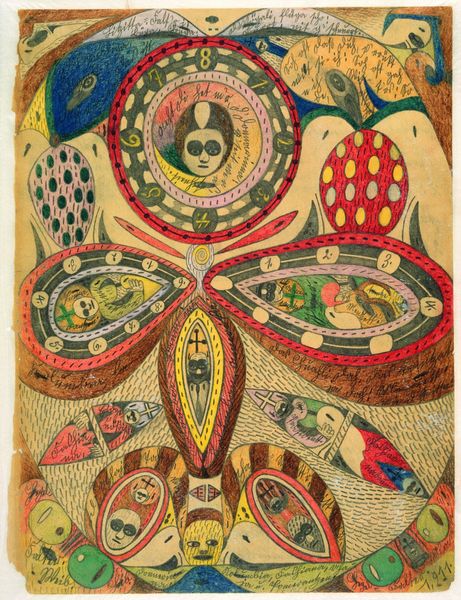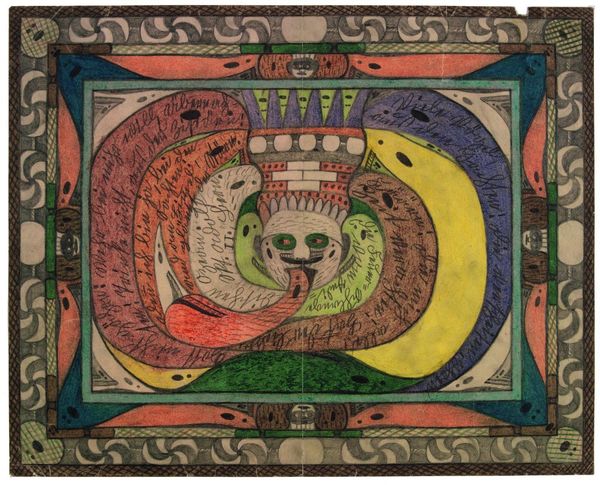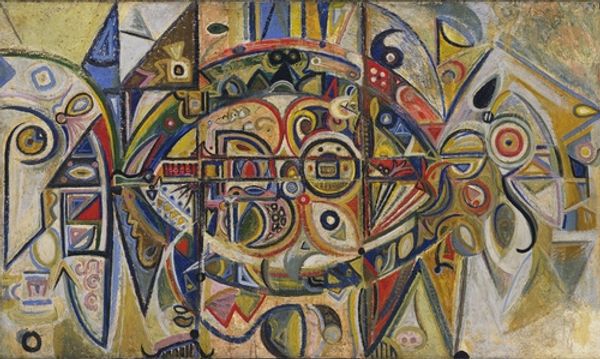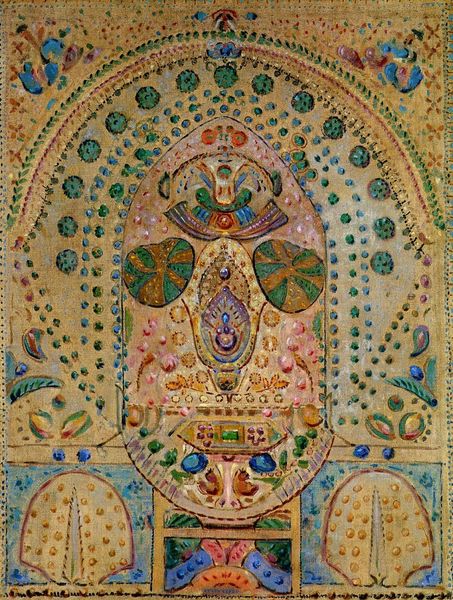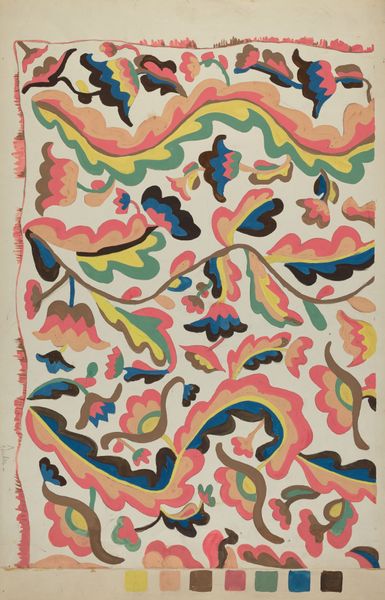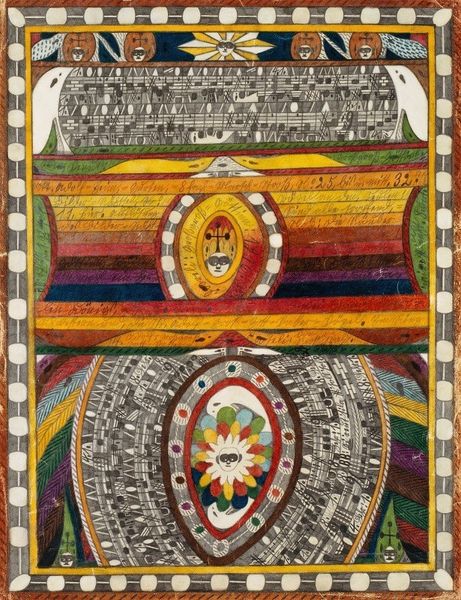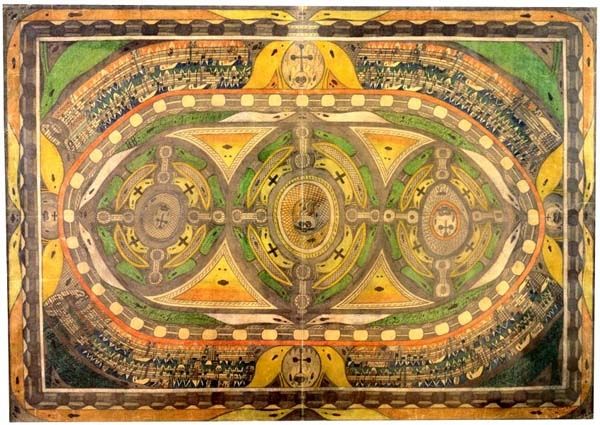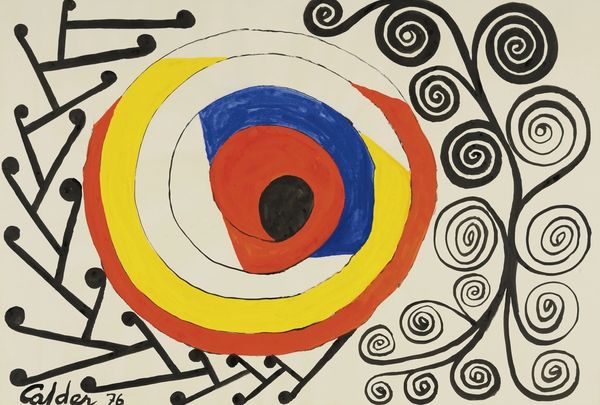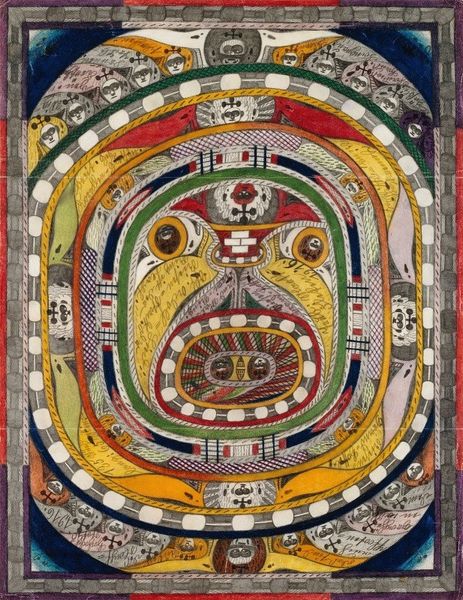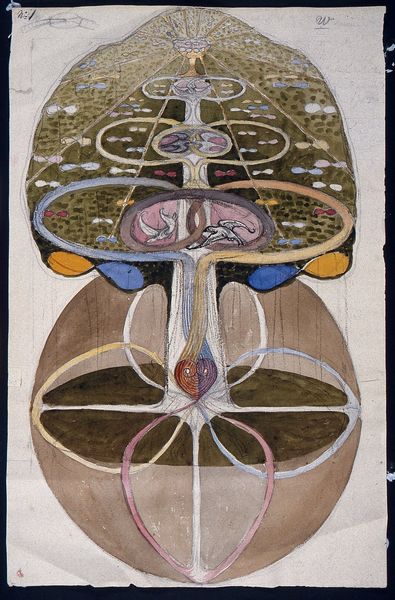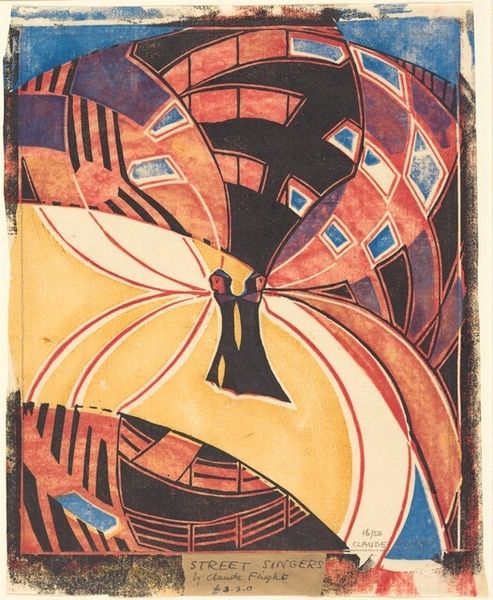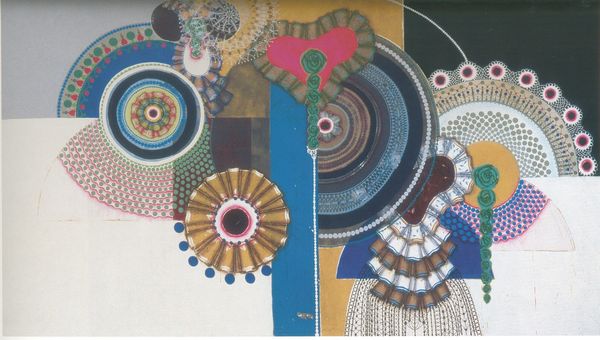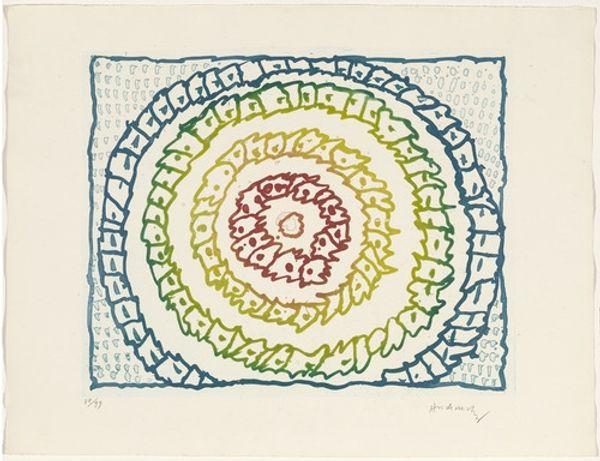
drawing, textile, paper, ink, pen
#
portrait
#
drawing
#
pattern
#
textile
#
outsider-art
#
figuration
#
paper
#
text
#
ink
#
geometric
#
expressionism
#
naive art
#
abstraction
#
pen
Copyright: Public domain
Editor: Right now, we're looking at Adolf Wölfli's "Lea Tantaria," an undated drawing made with ink, pen, and other media on paper. There's so much detail, with a face encircled by vibrant patterns, text, and musical notations. It’s incredibly intricate and a little overwhelming. What is your interpretation of the artwork, looking at it formally? Curator: It's clear that Wölfli is concerned with the formal interplay of elements. The radial composition is immediately striking. Note how the face acts as a visual anchor, drawing the eye to the center before it is released to explore the periphery. How do you interpret the relationship between the central image and its surroundings? Editor: The face seems almost trapped within the concentric circles. The patterns are visually stimulating, but also maybe a little claustrophobic? Curator: Precisely. The density of the marks and notations certainly contributes to a feeling of enclosure. Observe the texture, the contrast of light and dark areas, the repetition of motifs. These formal decisions create a powerful tension. The lines are rhythmic and deliberately chaotic to give the figure presence. Have you noticed the musical notes and fragmented text surrounding the face? What is your impression of the relationship of those? Editor: It almost feels like a cacophony. Visually, and maybe even audibly. They appear to create a sort of coded boundary between the central figure and the space beyond it. Curator: Indeed. By arranging it with precision, these symbols become inseparable. So we are drawn into their unified aesthetic. The overall visual complexity demands prolonged attention, inviting a kind of visual decoding that emphasizes the work's formal unity. Editor: It is amazing how much you can glean through formal analysis, even without knowing the artist's intentions. I guess form really does follow function? Curator: In many ways, yes. When analyzing art, function arises through rigorous understanding of formal properties. That’s what can make engaging with artworks so interesting.
Comments
No comments
Be the first to comment and join the conversation on the ultimate creative platform.
